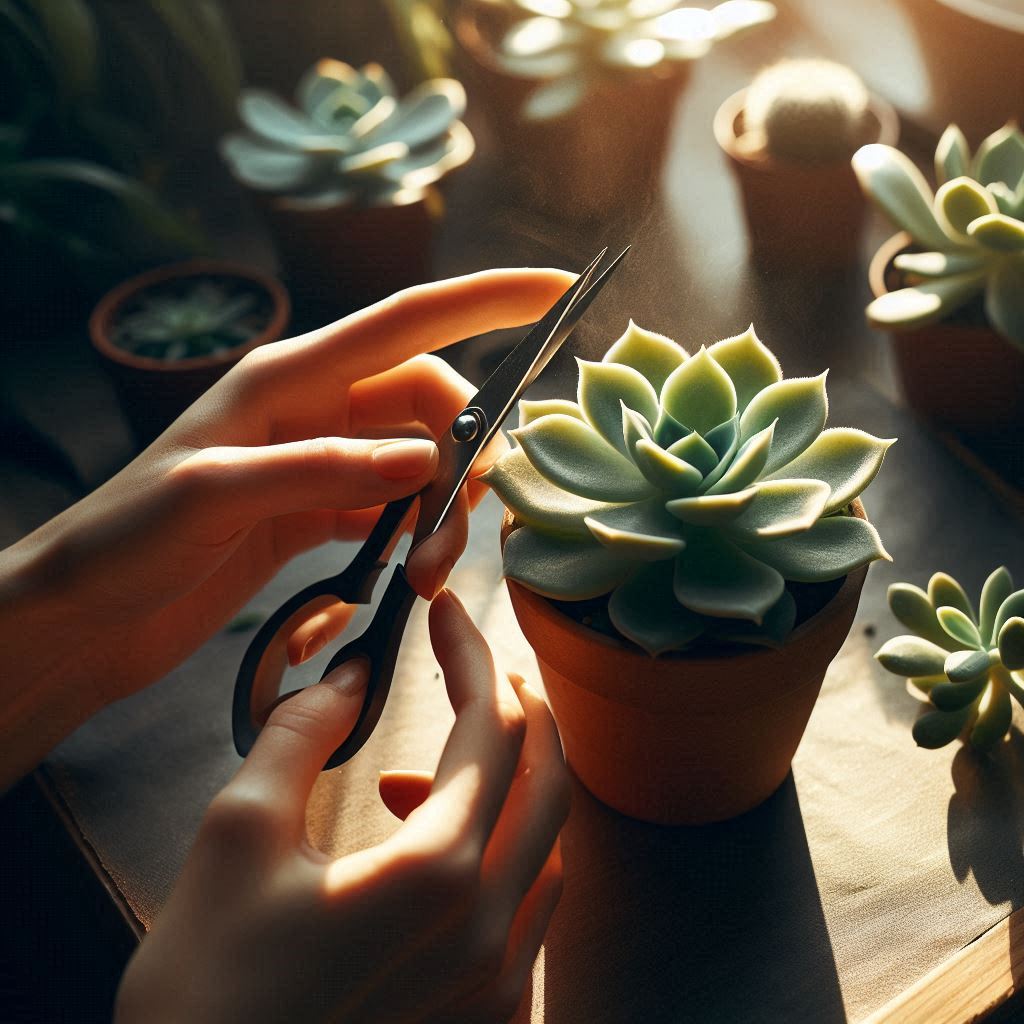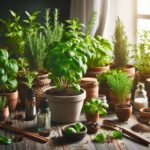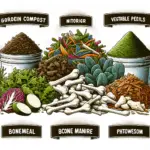Delve into the intriguing world of succulents and their relationship with humidity. Many plant lovers wonder, “do succulents like humidity?” Understand the balance succulents require and how to nurture them in humid or dry environments. Follow these insights to ensure your succulents thrive.
Understanding Succulent Adaptations to Different Humidity Levels
Succulents are known for their ability to thrive in arid environments, but they have developed fascinating adaptations to various humidity levels as well. Understanding these adaptations is key to creating the perfect environment for your succulents, ensuring their health and longevity.
Succulent Leaves and Water Retention Succulents often have thick leaves or stems that can store water. This adaptation allows them to survive periods of drought by utilizing stored moisture. In environments with low humidity, their leaves minimize water loss through a protective waxy coating.
Root Adaptations to Humidity Succulents have shallow root systems that spread widely to capture moisture from light rains or dew. In environments with higher humidity, they can absorb moisture from the air through their leaves, a process known as foliar uptake. This adaptation is vital for succulents living in regions with infrequent rainfall.
Stomatal Behavior The stomata on succulent leaves play a crucial role in managing water loss. They often remain closed during the hottest parts of the day to reduce evaporation in low humidity environments. At night or during cooler periods, the stomata open to allow gas exchange, which is essential for photosynthesis. By understanding these adaptations, you can better appreciate the resilience of succulents and create an environment that mimics their natural conditions, promoting optimal growth and health.
The Ideal Humidity Range for Healthy Succulents
Finding the right humidity range for succulents can significantly impact their health and growth. Succulents generally thrive in environments with a relative humidity of around 30% to 50%. These plants have developed unique adaptations that allow them to store water efficiently in their leaves, making them incredibly resilient to dry conditions.
However, maintaining this optimal humidity is crucial. When humidity levels fall below 30%, succulents might begin to show signs of dehydration. Their leaves can appear shriveled and may lose their vibrant color. On the other hand, environments where humidity exceeds 50% can lead to moisture accumulation on the plant’s surface, causing issues like root rot or fungal growth.
Creating the optimal humidity condition often requires careful attention to the plant’s surroundings. It’s advisable to place succulents in well-ventilated areas to ensure appropriate air circulation. Consider using a dehumidifier in overly moist areas to control the humidity levels indoors.
Outdoor succulents might face different challenges. During humid seasons, ensure that your outdoor succulents have adequate drainage to prevent waterlogged soil. Adjust your watering schedule based on the seasonal changes and humidity levels to keep your succulents in optimal health.
Controlling the ideal humidity range not only helps in maintaining vibrant and healthy succulents but also plays a pivotal role in their long-term survival and growth. Monitoring the environment regularly and adjusting as needed can make a world of difference for your succulents.
How Humidity Affects Succulent Growth and Survival
Succulents are renowned for their ability to thrive in arid, desert-like conditions where humidity levels are often low. However, humidity plays a crucial role in their growth and survival, impacting various physiological processes. When exposed to high humidity, succulents may struggle as their roots require a well-aerated environment to prevent rot. Excessive moisture in the air can lead to water retention in the plant’s tissue, making them susceptible to fungal infections.
Conversely, low humidity can cause succulents to dehydrate quickly. They have evolved to store water in their leaves, but prolonged exposure to dry air can result in excessive water loss, leading to shriveled leaves and stunted growth. Maintaining a balance is key. Humidity levels should ideally range between 40-60% to mimic their natural habitat, allowing for optimal oxygen and nutrient absorption while preventing issues associated with extreme moisture levels.
Observing your plants regularly will help you detect signs of humidity stress. Look for changes in leaf texture or color as indicators. If succulents appear mushy, it could be a sign of too much moisture; if they appear overly dry, the humidity may be too low. Making small changes like adjusting watering schedules, using a dehumidifier, or improving air circulation can significantly enhance their environment.
Signs of High Humidity Stress in Succulent Plants
When succulent plants are exposed to high humidity, they can show distress signals that need attention to ensure healthy growth. Look out for signs like leaf yellowing or dropping, which indicate excessive moisture in the air. Succulents are naturally adapted to dry conditions, so they might struggle in humid environments, leading to rot or mold on leaves and stems.
One sign of high humidity stress includes the appearance of soft, mushy areas on the plant. This can occur when there is too much water absorbed, and the plant’s storage tissues become saturated. Wilting can also occur as succulents try to manage the excess moisture, even though they might appear overwatered.
You might also notice succulent leaves becoming translucent or see-through, which is a definite indicator that the plant is having trouble. Mold growth or bacterial infections might also start appearing on the surface of the plant. This happens because high humidity creates a conducive environment for the growth of fungi and bacteria.
Monitoring these signals is crucial for maintaining a balanced environment for your succulents. Adjusting the humidity levels around them can prevent stress and ensure they thrive, even in less-than-ideal conditions, managing to keep them healthy and vibrant.
The Impact of Low Humidity on Succulent Health
Succulents, while often thought of as hardy and adaptable, can react adversely to low humidity levels. These plants have evolved to store water within their leaves, adapted to arid environments. However, their ability to thrive isn’t indefinite in extremely dry conditions.
Low humidity can lead to increased water loss through the leaves, a phenomenon known as transpiration. When the air is dry, succulents may use their stored water more rapidly, potentially leading to dehydration and withering.
Furthermore, low humidity impacts energy efficiency in these plants. They may close their stomata to reduce moisture loss, but this can also limit their ability to take in carbon dioxide needed for photosynthesis. This trade-off can compromise their growth and overall health.
Finally, it’s important to note that not all succulent species react similarly to low humidity. While some can manage, others may exhibit visible signs of stress, like wrinkled leaves or stunted growth. Monitoring these signs is crucial for maintaining succulent vitality and ensuring optimal living conditions.
How to Create a Balanced Environment for Succulents
To cultivate a thriving environment for succulents, it’s essential to balance humidity levels carefully. Succulents generally thrive in arid conditions, where humidity is quite low. This mimics their natural habitats, such as deserts, where they have adapted to store water efficiently. However, the goal is not to eliminate humidity entirely but to find a harmony that supports their growth process.
Understanding Humidity and Succulents
Humidity refers to the amount of water vapor present in the air. For succulents, low humidity levels are usually beneficial as they facilitate water absorption from the soil rather than the air. High humidity can cause problems, such as increased risk of fungal diseases and root rot.
Maintaining the right humidity is crucial, especially when succulents are grown indoors. One effective method to create a balanced environment is by using a hygrometer to monitor levels, ensuring they remain within the optimal range of 30%-50%. Furthermore, improving air circulation by using fans or opening windows can help lower humidity levels, replicating natural air movement found in outdoor arid environments.
Incorporating these practices will enable you to create an environment where succulents can flourish, aligning closely with their natural habitat requirements.
Watering Practices: Finding the Right Humidity Balance
When it comes to watering succulents, understanding the balance between hydration and humidity is key. Succulents store water in their leaves to survive dry conditions, but that doesn’t mean they don’t need any water. The trick is to mimic their natural rhythm found in arid habitats.
In areas of high humidity, succulents might not require as frequent watering. The air’s moisture can slow down water evaporation, maintaining hydration for a longer period. Despite this, overwatering remains a risk. Observe your plants closely; the soil should dry out completely before the next watering.
Conversely, in low-humidity areas, the evaporation rate increases. Succulents might display signs of needing water more often. However, sticking to a watering routine rather than a fixed schedule allows succulents to adapt better to the surrounding humidity levels.
Regularly check soil moisture. A moisture meter can offer accuracy if unsure. Complement watering with appropriately sized pots and well-draining soil to prevent root rot, a common issue when succulents sit in waterlogged conditions.
Can Succulents Thrive in Humid Climates?
Succulents are often known for their ability to retain water in arid conditions, but what happens when they are exposed to
humid climates?
The key lies in understanding their adaptations. While most succulents prefer dry air, some species have evolved to tolerate higher humidity levels.
High humidity poses a challenge for succulents because it can lead to excess moisture on their leaves and soil, causing root rot and other issues. However, certain succulent varieties, such as the Haworthia and Gasteria, are better suited for more humid environments due to their structural adaptations that allow for better airflow around their roots and leaves.
On the other hand, succulents such as Aeoniums, which have more lush foliage, might struggle in extremely humid conditions, as they are generally adapted to drier climates.
Creating an ideal environment for succulents in humid climates involves ensuring that they are planted in well-draining soil and pots with adequate drainage holes. Additionally, using a dehumidifier and ensuring good air circulation can help maintain a balance that most succulent species will find favorable.
It’s essential to observe and manage the humidity levels closely, as succulents will show signs if they are under stress from too much moisture. Look for symptoms like yellowing leaves or edema and take corrective measures promptly.
Common Myths About Succulents and Humidity
There is a lot of misinformation floating around about succulents and their relationship with humidity. One of the most common myths is that succulents thrive solely in dry environments and cannot withstand any humidity. While it’s true that succulents generally prefer drier climates, many species can adapt to a range of humidity levels.
Another misconception is that humidity always causes succulents to rot. While excessive humidity can indeed lead to issues like rot, it actually depends on several factors, such as air circulation and soil drainage. With proper airflow and a well-draining soil mix, succulents can handle a bit of humidity.
Some believe that increasing humidity will always make succulents grow better. In reality, giving succulents too much humidity may encourage fungal diseases, especially if their leaves remain wet for extended periods. It’s crucial to maintain a balance and ensure that any humidity is paired with adequate airflow.
People often think that succulents will automatically adapt to indoor humidity levels without any additional care. This is not always the case. Even indoors, some succulents may need additional humidity during the winter months when indoor air tends to be drier due to heating systems.
Finally, there’s a belief that all succulents react similarly to humidity. In truth, different succulent varieties have different needs when it comes to moisture and humidity. It’s essential to understand the specific requirements of each type to ensure they are thriving in their environment.
Tips for Growing Succulents Indoors in High Humidity
Growing succulents indoors in high humidity settings can be challenging, but with the right approach, these resilient plants can thrive. One crucial tip is to ensure adequate air circulation. Use a fan to keep the air moving around your succulents, reducing the risk of mold and rot. Additionally, placing your succulents near a sunny window can help evaporate excess moisture.
It’s also important to choose well-draining soil. This prevents water from sitting at the root, which is a common issue in humid environments. Consider using a mixture of sand, perlite, and pumice to create a breathable substrate.
Another key aspect is watering practices. Since the ambient moisture is already high, you should water sparingly. Allow the soil to dry out completely between waterings to mimic the natural conditions succulents prefer.
When selecting succulents for humid conditions, opt for varieties like Haworthia and Gasteria, which can withstand higher humidity levels better than others. Finally, monitor your plants regularly for signs of stress, such as leaf drop or root rot, and adjust care routines as necessary.
Best Succulent Varieties for Humid Environments

Aloe Vera: Known for its medicinal properties, Aloe Vera is a versatile succulent that can handle a wide range of humidity levels. Its thick, fleshy leaves store water, making it resilient in humid climates.
Haworthia: Haworthia species thrive well in humid environments due to their ability to retain moisture. They are compact and perfect for indoor spaces with controlled humidity.
Echeveria: Although traditionally found in arid conditions, many Echeveria varieties can adapt to more humid settings. Ensure they have good air circulation to prevent rot.
Cotyledon: This succulent is known for its tolerance of high humidity. Its waxy leaves act as a barrier, protecting the plant from excess moisture in the air.
Crassula: Most Crassula varieties, such as Jade Plants, can tolerate humid environments if not overwatered. Their popularity in indoor gardening makes them a great choice.
Choosing the Right Pot and Soil
In humid conditions, selection of appropriate soil and pots is crucial. Utilize well-draining soil mixes to help prevent root rot. Pots made from breathable materials like terracotta aid in moisture regulation.
Environmental Adjustments: Aside from choosing the right succulents, consider using dehumidifiers or fans in indoor spaces to maintain an ideal environment. Grouping succulents can also create a microclimate that stabilizes humidity, benefiting the plants.
How to Manage Humidity Levels for Potted Succulents
Managing humidity levels for potted succulents is crucial in preventing common issues such as root rot and mold. Succulents primarily thrive in environments where humidity is balanced, typically ranging from 5% to 30%. For potted succulents, it’s essential to monitor and adjust the humidity, as indoor environments can often be too humid due to factors like poor ventilation or excessive watering.
Begin by placing your succulents in well-drained pots. Use soil that allows for adequate air circulation and moisture wicking, which prevents excess humidity at the root level. Opt for pots with drainage holes to further ensure that water doesn’t accumulate, contributing to a humid micro-environment.
When watering succulents, it’s vital to apply the soak and dry method. This approach mimics their native arid climates, where they receive infrequent but heavy rains. Allow the soil to dry out completely between waterings, helping to manage overall humidity around the plant.
Consider using a humidity meter to get accurate readings of the air moisture. If the level is too high, increase air circulation by using fans or ensuring windows are open to let in fresh air. In very humid areas, a dehumidifier might be beneficial in maintaining optimal conditions for your succulents.
It’s important to regularly check the leaves and stems for signs of stress, such as mushy leaves or a change in color. These are indicators of excessive humidity levels. Adjust lighting and temperature settings to keep your plants stress-free; exposing them to direct sunlight can help reduce humidity naturally.
For those living in very humid climates, selecting humidity-tolerant succulent varieties may be your best option. Species such as Echeveria and Haworthia are more adaptable to higher humidity levels, ensuring a thriving indoor garden.
To ensure your succulents thrive in high humidity environments, it’s important to choose the right varieties. Certain succulents naturally adapt better to humid conditions, making them ideal choices for your indoor or outdoor garden in such climates.
- Haworthia: With its thick, fleshy leaves, the Haworthia is particularly good at retaining water and can better handle fluctuations in humidity levels.
- Aloe Vera: Known for its medicinal properties, Aloe Vera is also quite adaptable. It stores water in its leaves and can endure higher humidity levels, provided it gets enough light.
- Zebra Plant: This succulent, with its striking white stripes, is both aesthetically pleasing and more tolerant of moisture than many others.
- Kalanchoe: Vibrant and colorful, Kalanchoes are capable of adjusting to various humidity conditions as long as they aren’t overwatered.
These succulents are well-suited for regions with higher humidity, as long as you provide them with adequate light and manage watering to prevent over-saturation. When choosing succulents for humid climates, keep in mind that their ability to store water makes them more resilient, but it’s crucial to monitor for signs of stress. Selecting the right species will simplify care and enhance the longevity of your plants.







